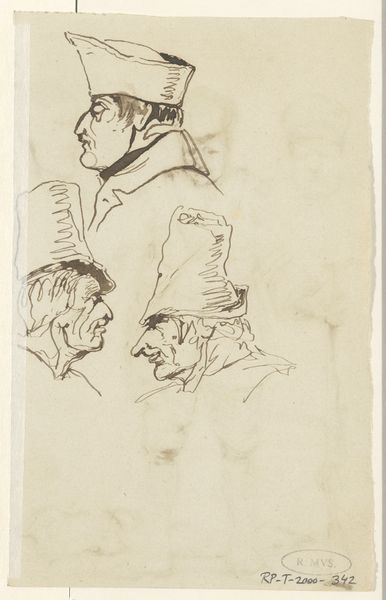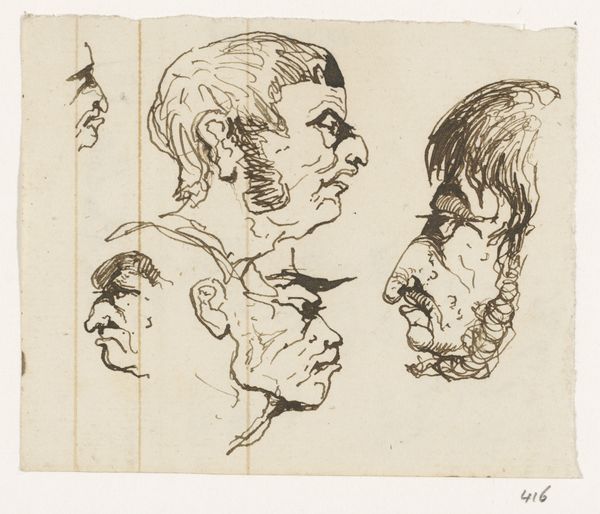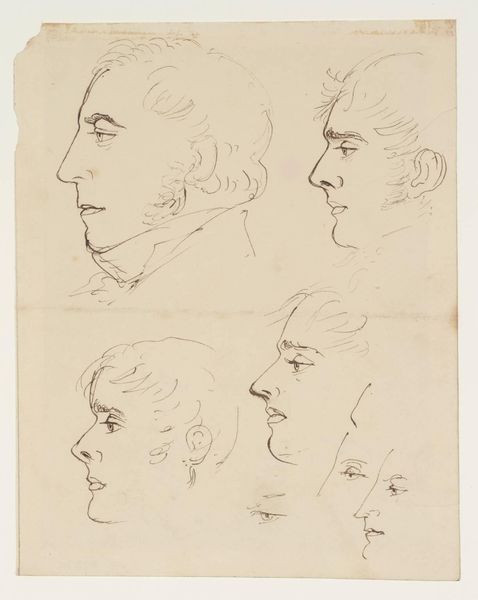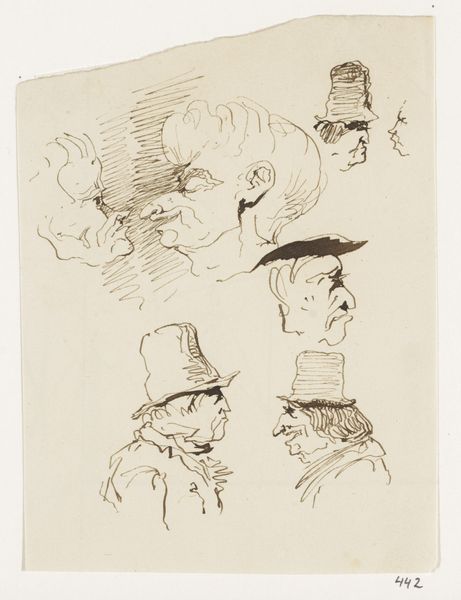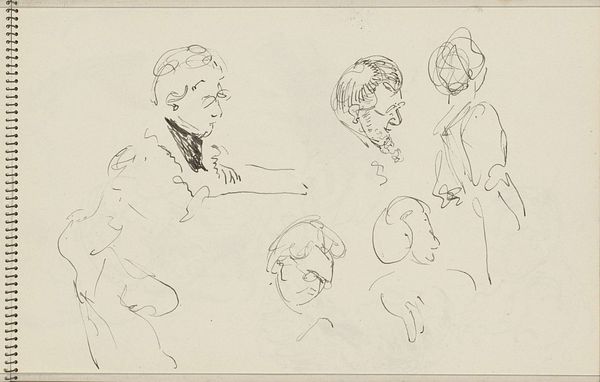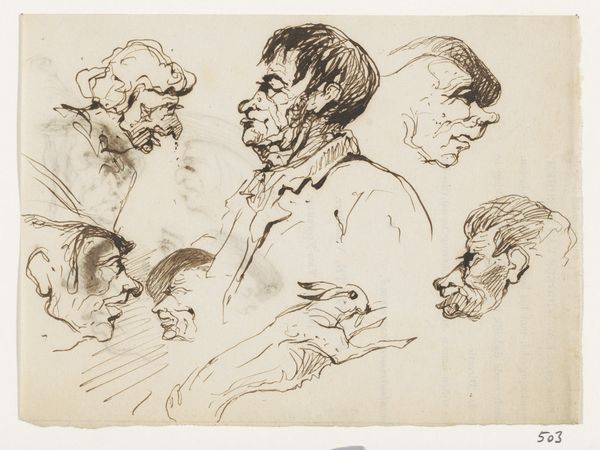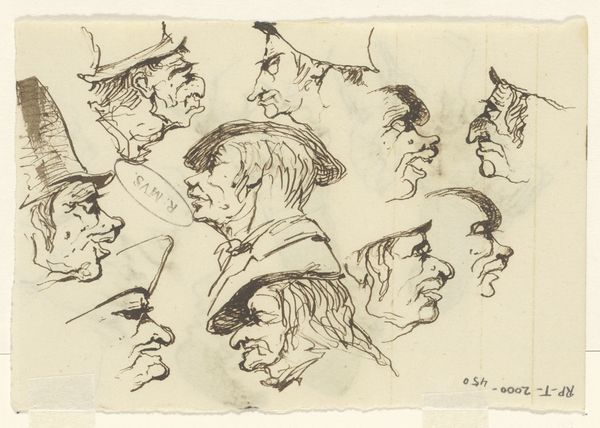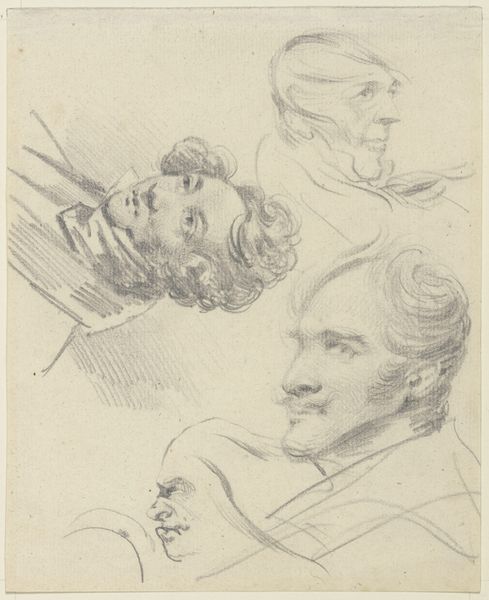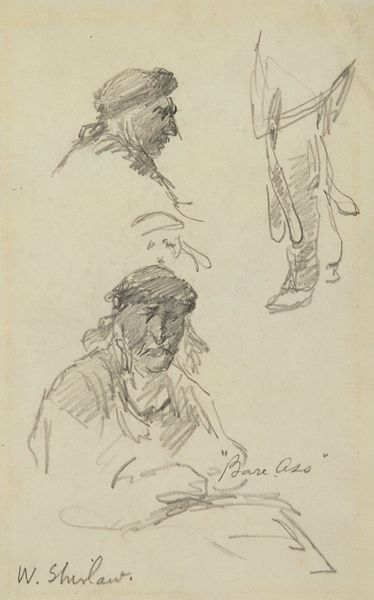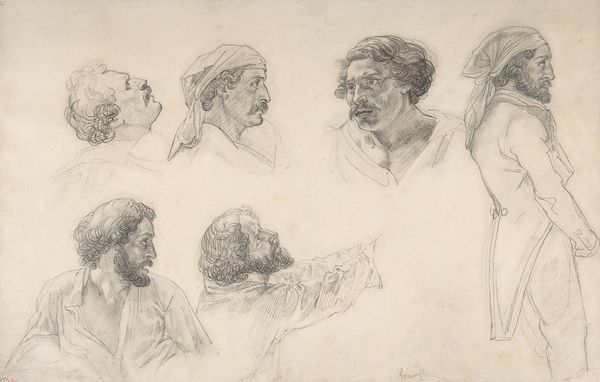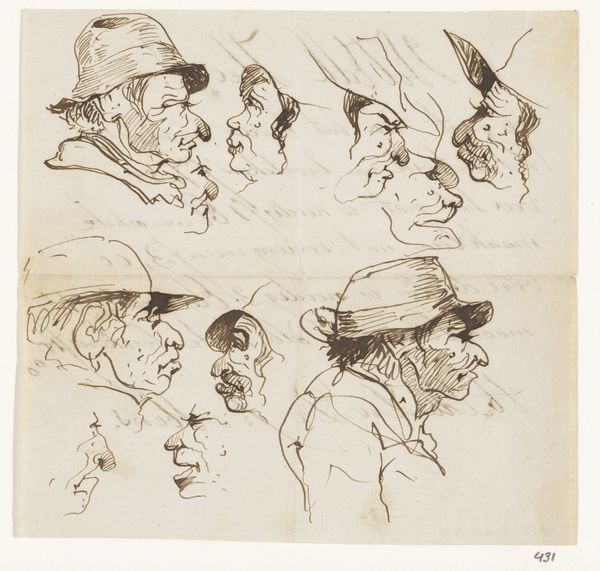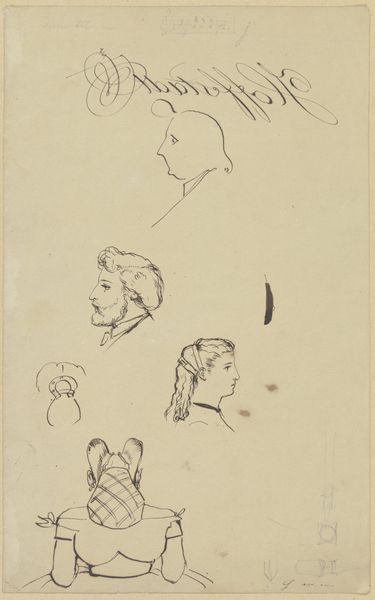
drawing, ink
#
portrait
#
drawing
#
art-nouveau
#
ink drawing
#
self-portrait
#
pen sketch
#
figuration
#
ink
#
academic-art
Dimensions: sheet: 26.67 × 20.64 cm (10 1/2 × 8 1/8 in.)
Copyright: National Gallery of Art: CC0 1.0
Curator: The ink drawing before us, "Head Studies," is attributed to Louis Anquetin, likely created around 1890. We see five distinct profile sketches of a single, perhaps recognizable, subject. Editor: They certainly have character, don’t they? Intense, brooding even. I'm struck by the economy of line; each stroke seems purposeful, almost like a swift notation capturing a fleeting emotion. Curator: Exactly! And it is through that economy that Anquetin shows us the immediacy of the artist’s hand. I'd argue it illustrates his training within academic art circles—a clear emphasis on draftsmanship but with a freedom suggestive of the Art Nouveau movement emerging at the time. Editor: The repetition, too, fascinates me. It suggests a methodical approach. Was he grappling with a specific aspect of the form? The nose, perhaps? Curator: Could be a formal exploration of perspective. More interestingly, however, what do these head studies reveal about artistic labor itself? The relative disposability of the material contrasts with our tendency to historicize great works in rarefied terms. Editor: Disposability, perhaps, only if we fail to appreciate the inherent value in process. The pentimenti here create this sense of immediacy, giving these rough studies a palpable sense of intimacy and authenticity. Curator: Indeed, and thinking in a broader cultural and economic sense, where does such intimate artmaking fit into a world already obsessed with manufactured celebrity and commerce? Perhaps here, at its roots, lies Anquetin's commentary. Editor: It is, without a doubt, a deeply fascinating glimpse into a study of form but, really, of the artist's own inner world too. Curator: Right. Anquetin invites us to look closer at both the act and byproducts of drawing. We recognize that its significance isn’t only based upon any particular interpretation; rather, its materiality and methods provide insights into how art is created more broadly within complex production chains and institutions.
Comments
No comments
Be the first to comment and join the conversation on the ultimate creative platform.
